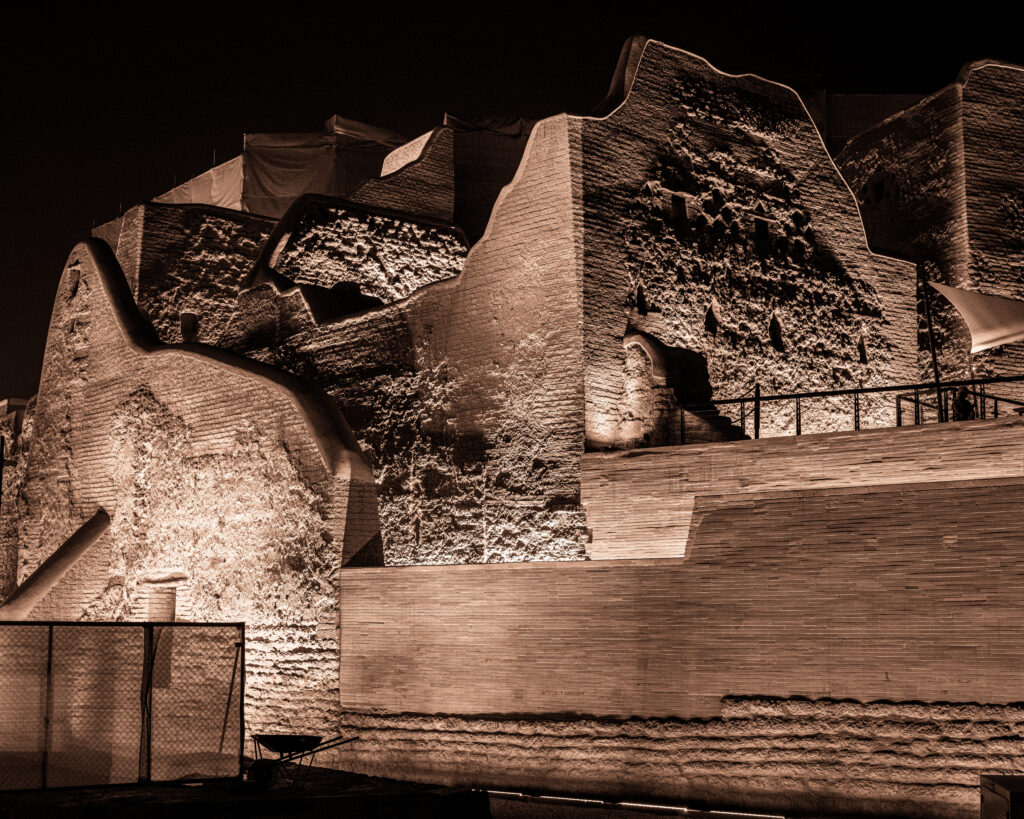Many of the Saudi homes, certainly in the area where we were staying, had high-walled properties.

I expect there are security, privacy and cultural reasons for this style of architecture. I see the parallel between protecting the private space of the garden with a wall and the privacy of a woman with a burqa. This speculation made me think a bit more about walls in general.

From the earliest times of human civilization, walls have stood silently, some naturally in caves and others as man-made structures of brick and mortar rising from the earth, delineating our space.
Physically, walls serve to define boundaries, enclosing an area to protect from beasts and the environment, which makes it a place, an oases of privacy and ownership. They separate us from others. In our minds we define metaphoric walls at the edges of acceptable and tolerable human practice. They mark the extent of our norms, our culture, they trace the line that separates right and wrong. Within us is walled a sanctuary built to shield our inner worlds, demarcating where we end and the rest of the world begins.

Walls transcend their physicality and metaphoric, to symbolize the edges of human understanding and the freedom or limitations we experience. In art, we might see walls that stand as silent witnesses to separation, isolation, and the divisions that cleave societies and ourselves apart, yet they are also a surface, a place for expression, that can serve as bridges connecting disparate worlds through the universal language of imagery and symbol; canvases of expression and records of history, from cave drawings to graffiti.


Walls are both inclusionary and exclusionary.
Leave a Reply